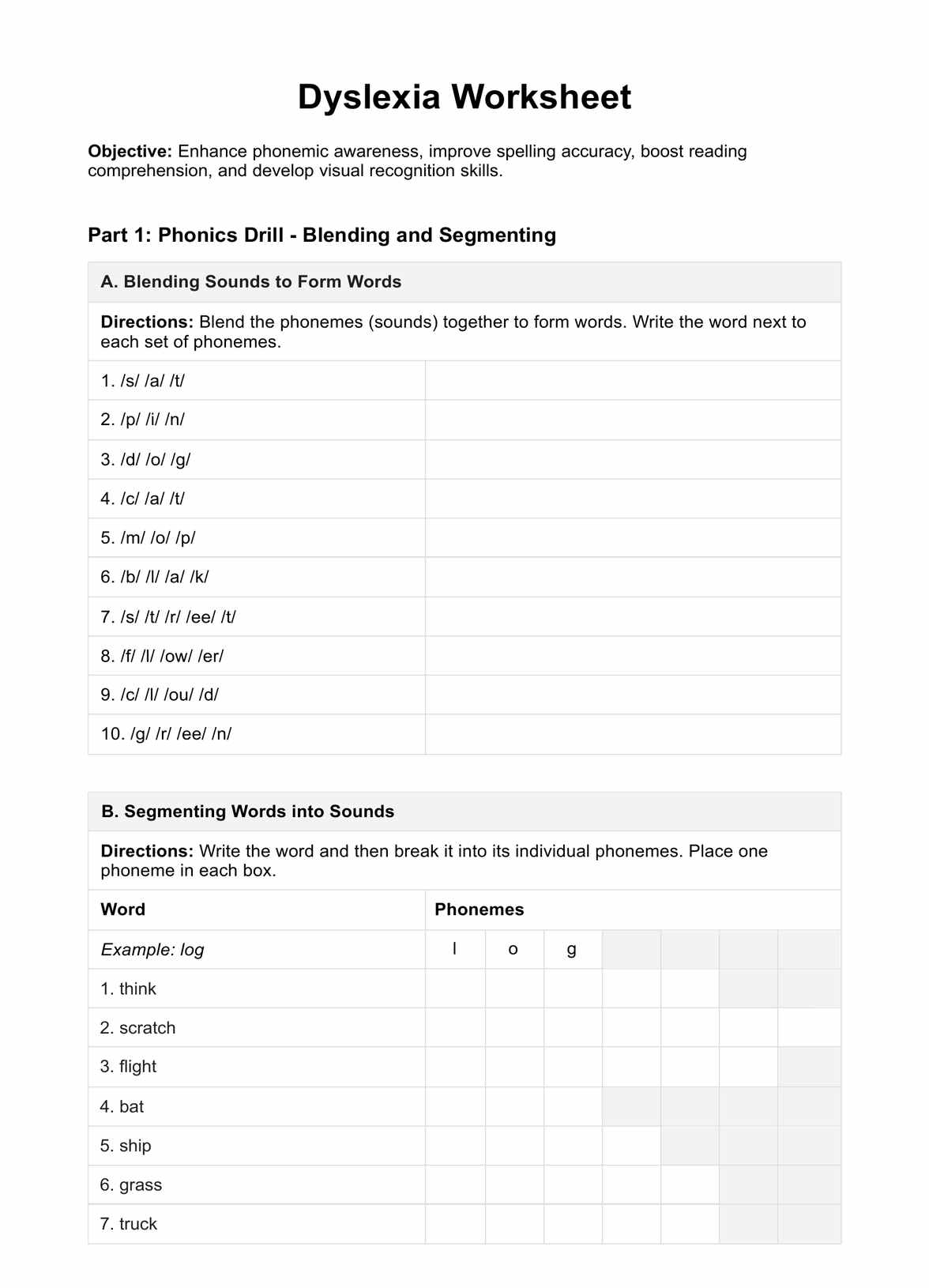Early signs of dyslexia in children include difficulty pronouncing words, learning the alphabet or recognizing letters, using new words, and following simple rhymes.

Dyslexia Worksheets
Explore our Dyslexia Worksheets for effective reading, writing, and spelling support. Free examples are included for structured learning.
Use Template
Dyslexia Worksheets Template
Commonly asked questions
Yes, adults with dyslexia can still benefit from interventions like structured literacy programs, books, professional support, and accommodations in the workplace, which help improve reading, writing, and organizational skills.
Yes, dyslexia can also affect writing, spelling, math, and organizational skills, along with impacting short-term memory and processing speed.
EHR and practice management software
Get started for free
*No credit card required
Free
$0/usd
Unlimited clients
Telehealth
1GB of storage
Client portal text
Automated billing and online payments











